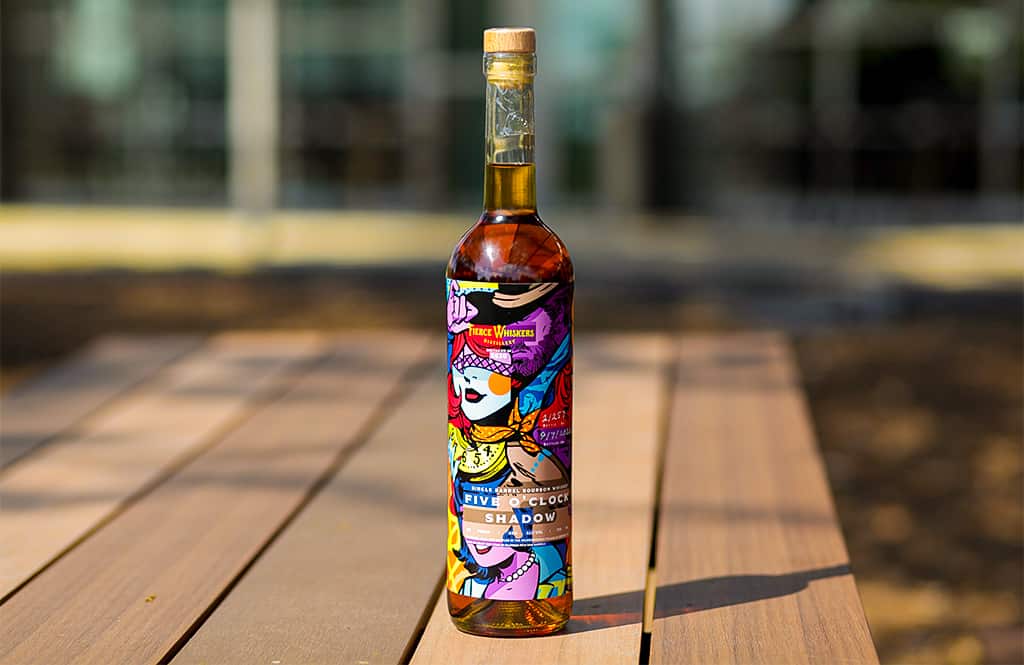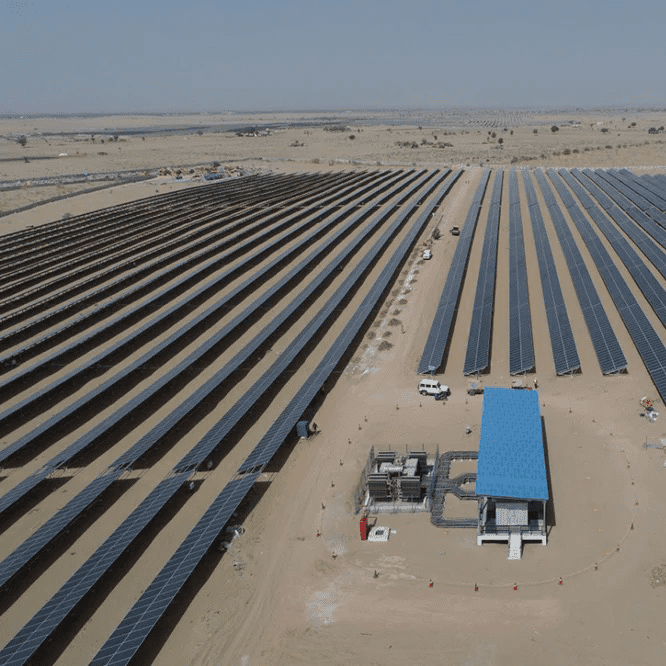Fierce Whiskers Launches World’s First Carbon-Negative Bourbon

The Austin distillery is releasing 257 carbon-negative bottles from Barrel #47 in a limited release.
CarbonBetter today announced the certification of the world’s first carbon-negative bourbon distilled by Fierce Whiskers Distillery (FW) in Austin, Texas. In 2021, FW published its first sustainability report, quantifying environmental impacts from the start of operations in 2020 through spring of 2021, demonstrating the importance of taking action even before the bottling and distribution of the product. Now, a year after opening the distillery to the public, FW is launching its first carbon-negative bourbon in a release of 257 bottles. This limited-release carbon-negative bourbon, called Five O’Clock Shadow, was produced and barreled in Barrel #47 in 2020, then aged in the rickhouse before bottling in September 2022.

1000% Carbon Negative Five O’Clock Shadow from Fierce Whiskers
Calculating the Emissions Footprint
To make this release carbon-negative, we needed to ensure our emissions minus reductions were less than zero. To do this, we followed these steps:
- Using the FW sustainability report, determine a per-proof gallon Scope 1 and 2 emission rate.
- Calculate Scope 3 emissions for the bottles.
- Add Scope 1, 2, and 3 emission amounts to determine the per-bottle footprint.
- Offset the full emissions for all 257 bottles by purchasing carbon credits.
About FW’s Scope 1, 2, and 3 Emissions

Carbon emissions for the limited release were estimated as follows: For Scope 1 and Scope 2 emissions, the facility-wide emissions quantified in the initial sustainability report were normalized against production rates in proof gallons, and then a per bottle emissions rate was calculated based on the proof gallons barreled in Barrel 47 and the bottling of 257 bottles for this release. Scope 3 emissions were calculated for the bottles (manufacture and shipping) based on the weight per bottle and the number of bottles.
* bottles only
To put these emissions into perspective, according to the EPA’s Greenhouse Gas (GHG) Equivalencies Calculator, 0.732 metric tons of GHG emissions is equal to the amount of emissions produced by:

Every Sip is Carbon Negative
To go carbon negative with the release of this bourbon, FW purchased carbon offset credits in the amount of 7.32 metric tons of CO2e to negate 1,000% of the 0.732 metric tons of CO2e emitted. FW has taken steps to incorporate energy efficiency throughout their facility and also installed solar panels in April 2021—carbon credits are a tool to help mitigate harder-to-abate emissions.

Selected Carbon Offset Projects
To reach 1,000% carbon negative for this release, FW invested in a diverse cross-section of projects to fund exciting technologies with valuable co-benefits. FW selected the following projects to offset the emissions from this limited release of Five O’Clock Shadow carbon-negative bourbon:

Project 1: Pulling Pollution From the Air
CLIMEWORKS | ICELAND | .32 METRIC TONS CO2
Climeworks is leading the charge for direct air capture (DAC) of CO2, a technology that pulls CO2 molecules out of the atmosphere. FW invested in the removal of 320 kg of carbon utilizing Climeworks’ innovative DAC technology. The purchase of this CO2 removal helps Climeworks to scale their technology to actively remove more carbon and fight climate change by removing excess CO2 from the air. Climeworks launched Orca, the world’s largest and first climate-positive DAC and storage plant in September 2021 in Iceland.

Project 2: 400 MW of Solar Energy
BHADLA, RAJASTHAN | INDIA | 2 METRIC TONS CO2
FW made the decision to invest in on-site solar energy at the distillery, which was installed in April 2021, contributing renewable energy to Austin Energy’s grid mix. To help bring more renewable energy supply to grids globally, FW has invested in a 400 megawatt (MW) solar power project in India, displacing power from the Indian grid which would otherwise be generated by fossil fuels. In addition to bringing clean energy to Bhadla, Rajasthan, India, the solar project has created jobs, brought medical resources to the area, and installed new street lights for public safety.

Project 3: Safe Drinking Water
SIERRA LEONE SAFE WATER | SIERRA LEONE | 2 METRIC TONS CO2
Producing whiskey requires significant water, and FW actively tracks water consumption during distillation, barreling, and bottling as well as other water impacts such as discharge. Given the reliance on water to make this carbon-negative bourbon, FW is excited to invest in bringing safe drinking water to Sierra Leone while simultaneously reducing carbon emissions by displacing the need to boil water over open fires to purify water.

Project 4: Regenerative Grazing
GRASSROOTS CARBON | TEXAS | 1 METRIC TONS CO2
As 99% of the grains by weight for all FW products are sourced from Texas, FW is excited to invest in regenerative grazing practices in Texas to promote healthy soil, store carbon, and support local rangers. FW also contributes to local farmers by donating spent grains which get utilized as feed for livestock.

Project 5: Supporting Biodiversity and Reforestation
BAUMINVEST MIXED REFORESTATION | COSTA RICA | 2 METRIC TONS CO2
Nature-based solutions are an important tool for sequestering carbon, so FW rounded out its project selection with the BaumInvest mixed reforestation project in Costa Rica which has successfully reforested 1,280 hectares of land by planting 1 million trees comprising a mix of 17 different tree species. Through biodiversity monitoring, the project has discovered that 70 new species of amphibians and reptiles have settled in the project area.
Emissions Calculation Details
Proof Gallons
The facility's total produced quantity of alcohol in units of measure of proof gallon is calculated by the barrels produced and the proof of alcohol contained in each barrel, as barreled. To calculate emissions for this release, the proof gallons for Barrel 47 were utilized, and emissions per bottle were based on the number of 750 milliliter (mL) bottles of 98-proof bourbon produced from Barrel 47.
Scope 1
Billing data from Texas Gas Services from the period of the start of production in August 2020 through March 2021 was utilized to determine the natural gas consumption for the FW Distillery. To estimate total emissions in carbon dioxide equivalent (CO2e), emission factors from the Environmental Protection Agency we applied.
Scope 2
FW procures energy from Austin Energy, a City of Austin utility. Utility bills from June 2020 through March 2021 were utilized to determine FW’s total electricity consumption for that time period. FW applied location-based emission factors from the regional ERCOT grid from EPA’s eGRID database to calculate facility-wide electricity emissions.
Scope 3
FW sourced glass bottles from Germany for the limited release. Carbon emissions associated with the transport of the bottles from Germany to FW were quantified utilizing the transport distances and EPA emission factors for cargo ships and trucks. For the emissions associated with the manufacture of the glass bottles, a life cycle analysis (LCA) factor was applied to the weight of the bottles, which are made with 80% recycled content.
Note: Scope 3 emissions for the limited release exclude emissions from the production of raw ingredients and the transport of ingredients to FW. FW plans to expand the boundaries of its Scope 3 emissions to incorporate ingredient emissions in its next sustainability report.
Five O’Clock Shadow bourbon is considered carbon-negative because the distillery has offset 1,000% of its total carbon emissions (0.732 metric tons of CO2e) by purchasing carbon offset credits amounting to 7.32 metric tons of CO2e. This means that more carbon emissions are being offset than produced during the production and distribution of the bourbon.
The carbon emissions were calculated using Scope 1, 2, and 3 emissions. Scope 1 and 2 emissions were determined using the initial sustainability report and normalized against production rates in proof gallons. Scope 3 emissions were calculated based on the weight of the bottles and the number of bottles produced. Both manufacturing and shipping of the bottles were considered in the calculations.
Fierce Whiskers has taken steps to incorporate energy efficiency throughout their facility. One example of this is the installation of solar panels in April 2021, which helps reduce the distillery's dependence on grid electricity and lowers its carbon footprint.
Ready to go carbon-negative?
At CarbonBetter, we believe in progress over perfection. It’s not about doing everything—it’s about doing something. With over a decade of experience in the energy industry, we partner with organizations to guide them in the transition to a net-zero economy. CarbonBetter’s sustainability specialists work closely with partners across all industries to integrate sustainability solutions seamlessly into any business.
CarbonBetter helps organizations of all sizes measure, reduce, report, and offset their emissions, and tell stories about their sustainability journey.
Telling stories about sustainability efforts helps other organizations take action that will then, in turn, inspire others—it's never too early or late to start.



